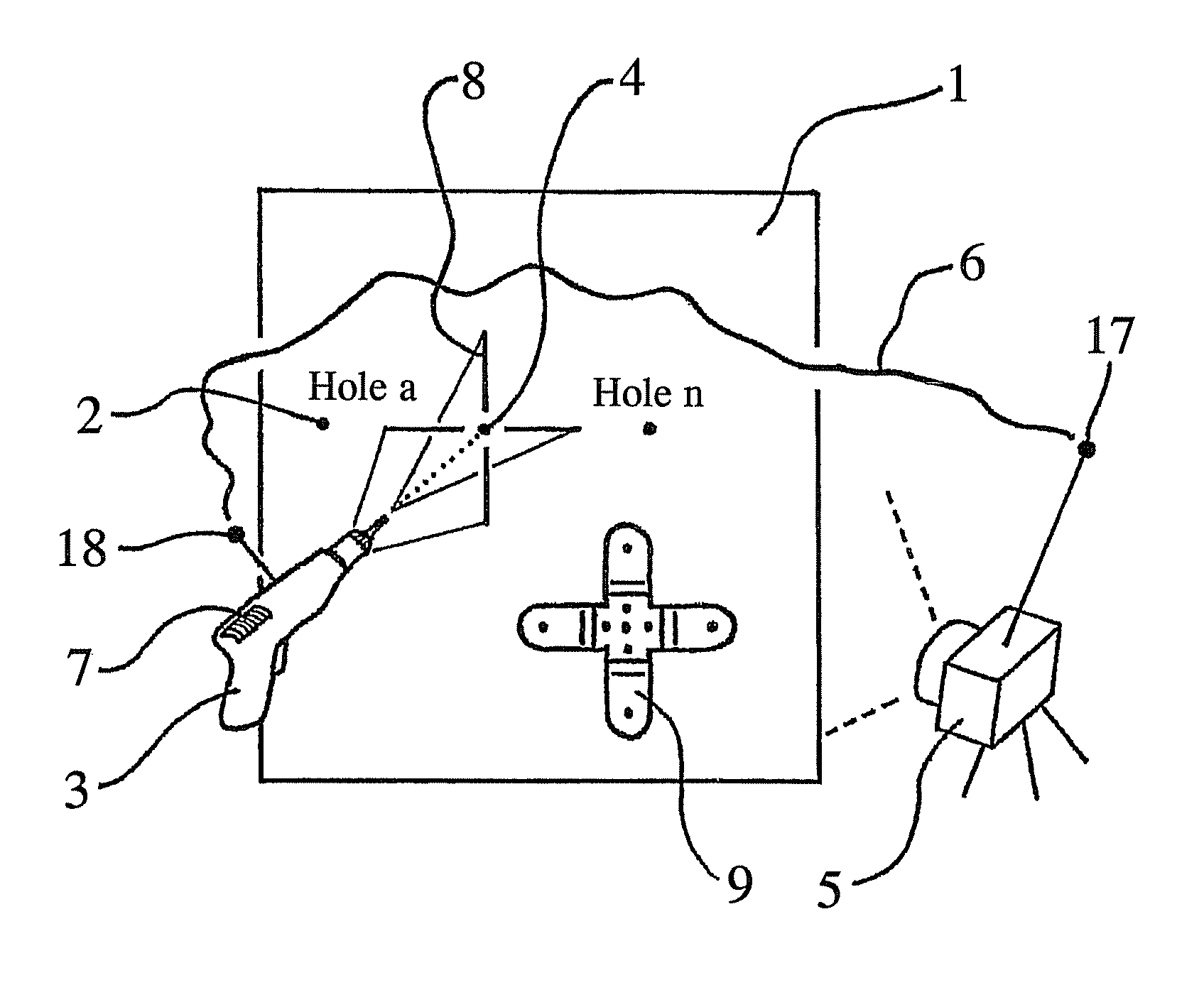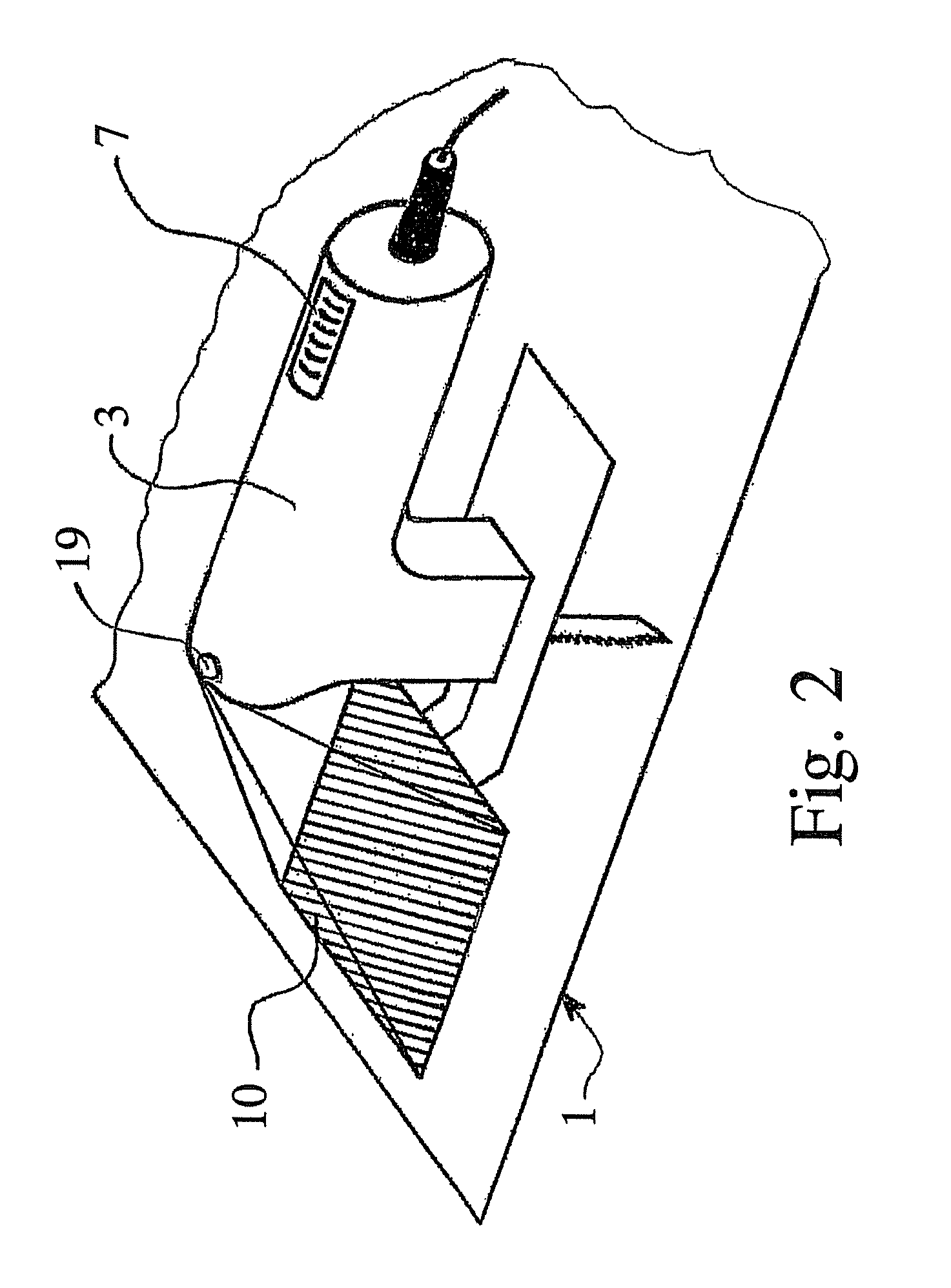Processing method using an electric tool
a technology of electric tools and workpieces, applied in the field of workpiece processing methods, can solve the problems of time-consuming measurement of working area and/or workpieces, inaccurate processing, and inability to accurately process, etc., to achieve easy and cost-effective work, facilitate work on a plane which occurs frequently, and facilitate calibration.
- Summary
- Abstract
- Description
- Claims
- Application Information
AI Technical Summary
Benefits of technology
Problems solved by technology
Method used
Image
Examples
Embodiment Construction
[0025]The method for processing a workpiece 1 will be explained in more detail with reference to FIG. 1. The workpiece 1 may be a wall, a ceiling, a floor or the like in a building, wherein, for example, the intention is to introduce a hole into the workpiece 1 at least one nominal position 2 by means of a movable appliance 3 which is controlled by hand. The appliance 3 is an electric tool, for example a drilling machine, an impact drilling machine or a hammer drill. In order to allow the appliance 3 to be moved to the predeterminable nominal position, essentially continuous position identification is carried out for the respective actual position of the appliance 3. An object 4 which can be moved corresponding to the appliance 3 is detected for this purpose, in which case the object 4 is a light spot projected by the appliance 3 onto the workpiece 1. Detection is carried out by optical methods, to be precise in this case by recording by means of a camera 5, and the detection proces...
PUM
 Login to View More
Login to View More Abstract
Description
Claims
Application Information
 Login to View More
Login to View More - R&D
- Intellectual Property
- Life Sciences
- Materials
- Tech Scout
- Unparalleled Data Quality
- Higher Quality Content
- 60% Fewer Hallucinations
Browse by: Latest US Patents, China's latest patents, Technical Efficacy Thesaurus, Application Domain, Technology Topic, Popular Technical Reports.
© 2025 PatSnap. All rights reserved.Legal|Privacy policy|Modern Slavery Act Transparency Statement|Sitemap|About US| Contact US: help@patsnap.com



